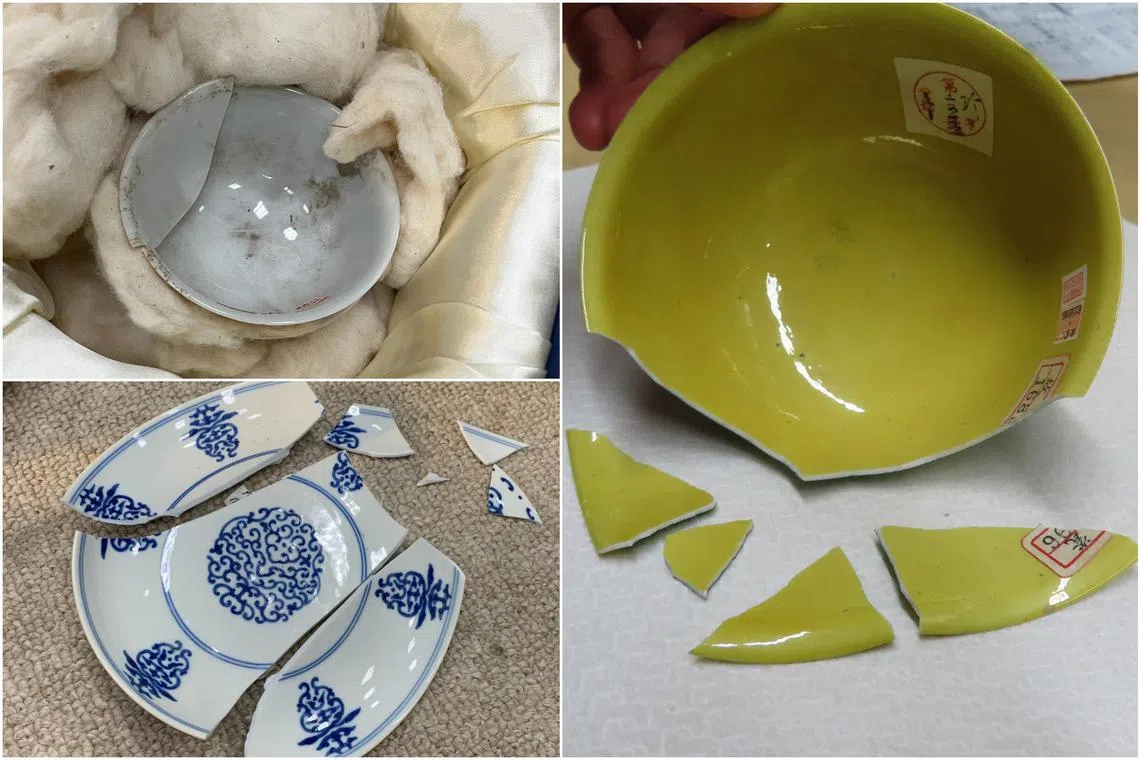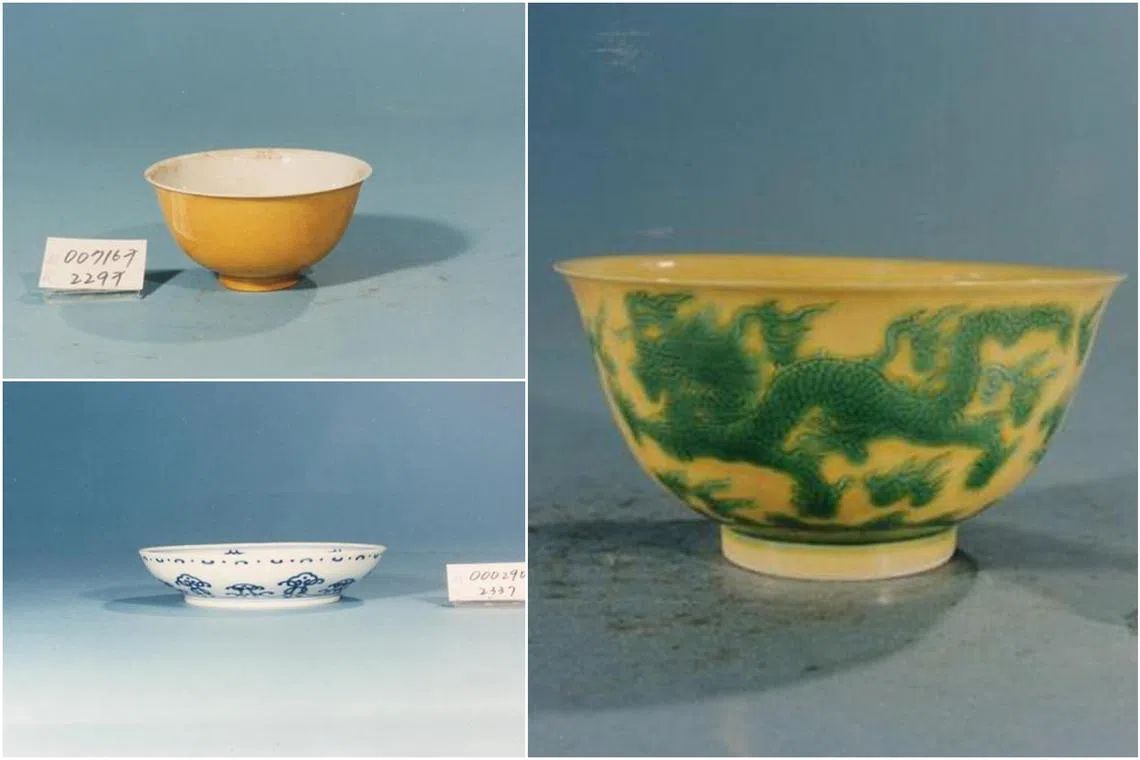Taiwan museum admits breaking Ming, Qing Dynasty artefacts worth $109m
Sign up now: Get insights on Asia's fast-moving developments

The multimillion-dollar artefacts were broken in three separate incidents over the past 18 months.
PHOTOS: NATIONAL PALACE MUSEUM
Follow topic:
Taiwan’s National Palace Museum has admitted to breaking three Ming and Qing Dynasty artefacts – two bowls and a plate – said to be worth more than a combined US$77 million (S$109 million).
The pieces were broken in three separate incidents over the past 18 months, but news of the damage emerged only last week after it was brought up by an opposition legislator.
On Oct 28, Kuomintang legislator Chen I-shin told lawmakers that he had received a tip-off about the incidents at the museum and accused its director Wu Mi-cha of a deliberate cover-up.
Mr Wu denied the accusations, saying that there was “absolutely no hidden affair”. He added that the staff had immediately reported the incidents to the management, as protocol dictated.
On Wednesday, the museum told The Straits Times that the three items, which date back to the 15th and 17th centuries, were classified under the low-level designation “general antiquities” and thus reporting the incidents to the Ministry of Culture was not required.
According to the museum, two of the items – a Ming Dynasty bowl with dragon motifs and a yellow Qing Dynasty bowl – were discovered to be broken in their boxes while staff were sorting archive collections. It is unclear whether the pieces were damaged by workers or due to poor storage methods, the museum said.
But the Qing Dynasty blue and white porcelain plate had broken into several pieces due to negligent handling, the museum said. A staff member had put the plate on a 1m-tall table, from which it fell to the floor. Disciplinary action was taken, the museum added.
The museum said that it would assess the items for repair and vowed to improve artefact storage practices.
The National Palace Museum, located in Taipei, houses one of the world’s largest collection of prized Chinese artefacts, with pieces spanning 8,000 years of history.
Many of the pieces were moved there from China by former Kuomintang leader Chiang Kai-shek when his party fled to Taiwan after losing the Chinese civil war in 1949. For years, this has been a sore point for Beijing, which has said that the items were stolen from China.
Since news of the damage emerged, social media users in China have accused the Taiwanese government of destroying valuable Chinese treasures and destroying their shared heritage in the process.
On Chinese social media platform Weibo, a hashtag related to the incidents has received close to two million views. “Do they need help with repairing these items? They can come to the motherland for help,” one user wrote.

Since news of the damage emerged, social media users in China have accused the Taiwanese government of destroying valuable Chinese treasures.
PHOTOS: NATIONAL PALACE MUSEUM
Beijing views Taiwan as a renegade province awaiting reunification with the mainland, by force if necessary.
Meanwhile, Chinese state media outlet Global Times slammed the museum’s management in an editorial and said that Taiwan’s reunification with the mainland was the way forward.
“Only under reunification can national treasures be better protected, and cultural relics can better play their role in passing on the bloodline of the Chinese civilisation,” it wrote.


